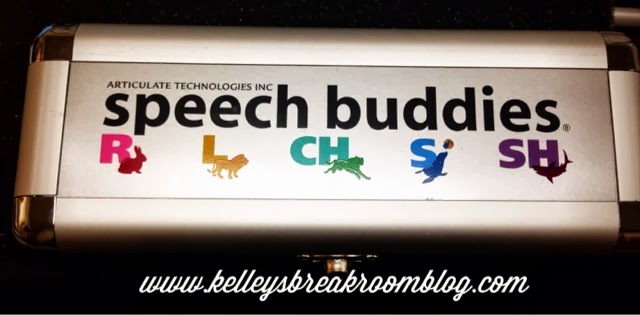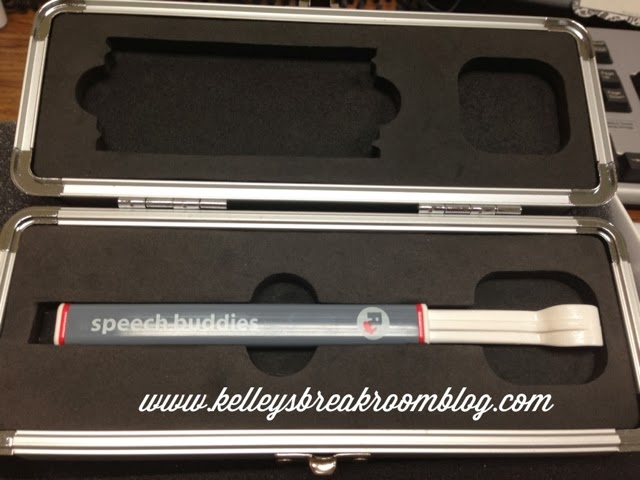The Speech-Language Development Files: Trouble With R
(I get that look at least twice a day.)
We have two boys that are 9 and 5 1/2. Once my 5 1/2 went to Kindergarten this fall, I amped up my work load. I am still only part-time, but it doesn't feel like it! I work at an elementary school while they are in school Monday through Thursday. I also still work with adults at a hospital nearby but that is only "as needed".
We have two boys that are 9 and 5 1/2. Once my 5 1/2 went to Kindergarten this fall, I amped up my work load. I am still only part-time, but it doesn't feel like it! I work at an elementary school while they are in school Monday through Thursday. I also still work with adults at a hospital nearby but that is only "as needed".
I love working as a speech pathologist for many reasons. I love working with people in general- both young and old. I also love the flexibility that it gives.
And I love the funny things that can happen. If you follow me on Facebook, you probably remember the story about the hammer, the one about the leper and the other one about the "ih-er" (sticker). These all happened within the last week or so.
Mostly, though, I love working as a speech pathologist because it feels great to see people make progress in an area in which they struggle, whether it is with articulation, language, fluency (stuttering) or swallowing.
Given that I have primarily worked with adults most of my professional life, with the exception of providing assessments for a few years at another school district, working with kids in a school setting is a new area for me.
It is a whole new world.
Right now I am in the midst of collecting therapy materials, speech homework sheets, ideas for working with preschoolers and on and on. I am hoping that I will have a really stocked room in a year from now with all sorts of cute and fun things that will engage the students and help them learn.
When I brought up the fact that I do this as a profession on my Kelley's Break Room page (my hobby!), many of you said that you were in speech, you have kids in speech or you were just interested in speech and language development. I do not want to turn this into a speech and language therapy blog. I am not worthy! There are just SO MANY great ones out there. My head hurts just thinking of all the ones I have come across. I thought on occasion, though, that I could share with you things that I learn along the way and tackle some of the things you'd like to know more about here and there. Maybe you could mention things that you'd like to know more about in the comments section of this post.
One great way for me to share with you cool stuff that I find is for you to follow me on Pinterest. If you just want to follow my "Speech Therapy Stuff" board you can find it here. I am a pinning fool lately when it comes to speech and language therapy-y things. Some will make sense to you and some may not, but I am sure you will find something that you will like. (I am absolutely OBSESSED with the "Teachers Pay Teachers" site. It is full of therapy and educational materials and I love it long time. I have been pinning from there a lot.)
As a kick-off to this new little side to my blog, I am going to quickly talk about trouble articulating the /r/ phoneme. This has got to be one of the hardest sounds to master. Most speech pathologists work their way through all of the other sounds first and leave this one for last. For one thing, it is a later developing sound. It should be mastered somewhere between 3 and 6 years of age, but many school-based therapists don't pick up kids specifically to work on the /r/ phoneme until second grade or later. (Sidenote: If school speech pathologists picked up every child with a little trouble with speech, there would be no time to give any child quality therapy. The rooms would be too packed.)
The /r/ sound is just one of those difficult ones to master for some and a challenge to teach because you cannot see yourself make it. It is my goal this year to kick the /r/ in it's big bumpy behind and have the children on my caseload, and some that I know, ahem, personally, finally get it.
You can imagine when I saw an advertisement for the Speech Buddies "Rabbit Buddy" tool, I got all kinds of excited. I reached out to Articulate Technologies and asked if they would be willing to send me one in exchange for a review. After a few e-mails back and forth, I was giving them my address. How awesome are they, right?
Before I talk more about this speech "tool", let me just say that I am not a therapist that does all sorts of oral-motor therapy to help "strengthen" this or that. There is a lot of research out there that does not support "exercises" to improve speech. Many that use oral-motor exercises feel like those exercises most certainly do improve speech, of course. This "Rabbit Buddy" tool from Articulate Technologies, however, is meant to show children where to put his or her tongue when saying the /r/ sound and is not really exercising anything in particular.
Right now I am in the midst of collecting therapy materials, speech homework sheets, ideas for working with preschoolers and on and on. I am hoping that I will have a really stocked room in a year from now with all sorts of cute and fun things that will engage the students and help them learn.
When I brought up the fact that I do this as a profession on my Kelley's Break Room page (my hobby!), many of you said that you were in speech, you have kids in speech or you were just interested in speech and language development. I do not want to turn this into a speech and language therapy blog. I am not worthy! There are just SO MANY great ones out there. My head hurts just thinking of all the ones I have come across. I thought on occasion, though, that I could share with you things that I learn along the way and tackle some of the things you'd like to know more about here and there. Maybe you could mention things that you'd like to know more about in the comments section of this post.
One great way for me to share with you cool stuff that I find is for you to follow me on Pinterest. If you just want to follow my "Speech Therapy Stuff" board you can find it here. I am a pinning fool lately when it comes to speech and language therapy-y things. Some will make sense to you and some may not, but I am sure you will find something that you will like. (I am absolutely OBSESSED with the "Teachers Pay Teachers" site. It is full of therapy and educational materials and I love it long time. I have been pinning from there a lot.)
As a kick-off to this new little side to my blog, I am going to quickly talk about trouble articulating the /r/ phoneme. This has got to be one of the hardest sounds to master. Most speech pathologists work their way through all of the other sounds first and leave this one for last. For one thing, it is a later developing sound. It should be mastered somewhere between 3 and 6 years of age, but many school-based therapists don't pick up kids specifically to work on the /r/ phoneme until second grade or later. (Sidenote: If school speech pathologists picked up every child with a little trouble with speech, there would be no time to give any child quality therapy. The rooms would be too packed.)
The /r/ sound is just one of those difficult ones to master for some and a challenge to teach because you cannot see yourself make it. It is my goal this year to kick the /r/ in it's big bumpy behind and have the children on my caseload, and some that I know, ahem, personally, finally get it.
You can imagine when I saw an advertisement for the Speech Buddies "Rabbit Buddy" tool, I got all kinds of excited. I reached out to Articulate Technologies and asked if they would be willing to send me one in exchange for a review. After a few e-mails back and forth, I was giving them my address. How awesome are they, right?
Before I talk more about this speech "tool", let me just say that I am not a therapist that does all sorts of oral-motor therapy to help "strengthen" this or that. There is a lot of research out there that does not support "exercises" to improve speech. Many that use oral-motor exercises feel like those exercises most certainly do improve speech, of course. This "Rabbit Buddy" tool from Articulate Technologies, however, is meant to show children where to put his or her tongue when saying the /r/ sound and is not really exercising anything in particular.
Let me show you some pictures and then give you some more information about it.
You can see that there are several letters written across the metal container. Articulate Technologies makes "speech buddies" for all of those different sounds. I only requested the one for /r/.
I was thoroughly impressed with this container, by the way. I felt like I was either about to perform surgery or a magic trick. (Helping a kid finally say the /r/ right is pretty much magic.) I also thought it looked like those cases they use in the movie to stack a bunch of hunnahdollah bills inside. Mine didn't come with any hunnahdollah bills, but it did come with a cobra.
No, like the picture said, it's not a cobra. (I had to take a double take to make sure, though.)
So, here's the deal:
-This tool is meant for parents and speech pathologists alike.
-The child places it in his or her mouth with the coil facing downwards.
-The child places the tongue into the coil. There are bumps on either side of it for the child to sense.
-As the child uncoils the tool, the tongue is going into the /r/ formation.
Pretty simple, right?
I have only had my two boys try it. Their /r/'s could use a little tweaking. They like using it and they like having something to direct their attention to rather than seeing me turning over upside down in their face just so I could catch a glimpse of what their tongues are doing when they say /r/.
We won't even go into it here, but there are a lot of variations of /r/. It's not just "errr". There is an /r/ at the beginning of the word, and /r/ at the middle of the word, /r/ in blends, such as "Sprite", and the VOCALIC /R/, which sometimes doesn't want to be our friend. This is the /r/ at the end of the word and can be "or", "er", "ar", "air" and "ire". My thought is that if the Speech Buddy can help a child say one variation of /r/ correctly, it will hopefully soon carry over to the other /r/ forms.
Since we are talking about the Speech Buddies tool in this post, I won't go into the traditional way of teaching children to pronounce it correctly. There isn't one way. There are all sorts of tricks that speech pathologists have up their sleeves for this sort of thing. I still maintain that if a tool can help speed that process along, though, I'm all for it!
The thing is, it's not like you have a child use it once or twice to see the results for which you had hoped. It is a tool that you use over time. The Speech Buddies people say that, on average, a child should be able to articulate the sound correctly in 2-5 weeks. The small manual/brochure that comes in the box gives a therapy plan to follow. It is recommended that you have the child use the Speech Buddies 10 times at least 3 days a week gradually transitioning from having to have the Rabbit Buddy to say /r/ correctly to not having to use anything to articulate /r/ correctly.
The drawback to the Speech Buddy is that this Rabbit Buddy costs $124. If you want all 5 tools, the cost would be $299. In addition to that, it states in the paperwork to only use it with one child. I have been doing some research on-line and it seems that many therapists are using it with multiple children. They are cleaning it with the Clorox wipes that say "cleans and disinfects medical equipment services" on it or rubbing alcohol.
Here are some videos of people in action with it:
There has also been some research presented at our national convention, The American Speech-Language-Hearing Association (ASHA) Convention since 2010, as well as many other articles pertaining to the research behind the Speech Buddies tool that you can read about here.
I have not used it with my students yet, but I have used it with my sons. I can see almost an immediate difference with my younger son. He is able to articulate the /r/ phoneme with just a little bit of direction from the tool. We are going to start using the tool in conjunction with some training videos that Speech Buddies also provides. I am excited about those, because it will allow him to work independently and feel more confident in his skills on his own. I am also excited about those videos because the kids at work will enjoy the computer time, especially if it helps them say that dadgum sound right finally!
I can't wait to try this at work. Honestly, my hang-up with using it there was the whole "you can't use it with more than one kid" deal. It sounds like, however, it can be adequately cleaned and used with other students, which is AWESOME. I am really looking forward to trying this out with them next week. Maybe I will have to come back and attach an addendum then.
So, that's it. That's my little plug for the Speech Buddies /r/ tool, which I love and am grateful for given all the reasons I mentioned above. Thank you, Articulate Technologies, for sending the tool in my direction!
If you guys have any general speech and language development questions or concerns that you would like to see me tackle now and then here in the "Break Room", let me know in the comments below!





